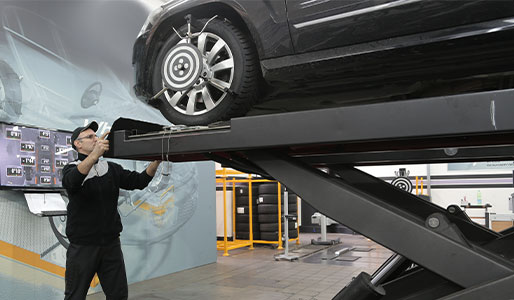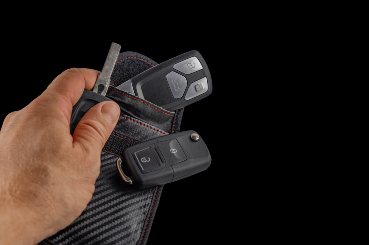In the sprawling world of automobile manufacturing, where innovation drives progress and efficiency is paramount, there exists a marvel of modern engineering that has transformed the industry like no other: the car assembly line.
What was once a complex, time-consuming process has been distilled into a symphony of synchronised tasks, where robots and human workers work in tandem to bring vehicles to life.

In this blog, we will embark on a journey to unravel the secrets of the car assembly line, exploring its history, mechanics, and profound impact on the automotive industry.
From the pioneering days of Henry Ford’s Model T to the cutting-edge technology of today, we will dive into the heart of this transformative invention, discovering how it has revolutionised not just how automobiles are made, but the very essence of transportation itself.
Welcome to the car assembly line world, where precision meets productivity, and innovation knows no bounds.
How Do Car Assembly Lines Work?
Car assembly lines are intricate systems that streamline the manufacturing process of automobiles, allowing for efficient and cost-effective mass production.
When thinking about how an automobile is made, the creation is a complex and meticulously orchestrated process that involves a multitude of steps and the careful assembly of various components. It all begins with the design and engineering phase, where teams of experts conceive and refine the vehicle’s blueprint.
How automobile production line work comes from the design which is finalised from the automotive brand. Production begins with the fabrication of the car’s skeletal frame, often made from steel or aluminium. Subsequently, the vehicle undergoes painting, where it receives its distinctive colour and protective coatings.
At the core of this remarkable system is the concept of dividing the car manufacturing process into a series of sequential and specialised tasks. Each station on the assembly line is responsible for a specific aspect of vehicle assembly, from welding and painting to installing components like engines, transmissions, and interiors.
Human workers and robots work in tandem, with robots handling repetitive, physically demanding, or precise tasks, while skilled workers oversee and fine-tune the process. The assembly line operates with clockwork precision, moving the vehicle chassis from station to station on a conveyor system, ensuring that every step is completed swiftly and accurately.
This synchronised ballet of machines and human expertise allows automakers to produce high-quality vehicles at a rapid pace, making automobiles accessible to millions around the globe while continually pushing the boundaries of innovation and technology in the automotive industry. Quality control checkpoints ensure that every detail meets rigorous standards.
Finally, the vehicle undergoes extensive testing, from performance evaluations to safety assessments, before it’s ready to roll off the production line and into the hands of eager drivers around the world.
The first car production line, as we know it today, was pioneered by none other than Henry Ford. In 1913, the Ford assembly line started rolling, forever changing the automotive industry. Ford’s innovation allowed the Model T to be assembled in just 93 minutes, a fraction of the time it had previously taken.

Robots in the Automotive Manufacturing Industry
Robots have revolutionised the automotive manufacturing industry, becoming indispensable tools in the creation of modern vehicles. These precision machines perform a wide range of tasks with unparalleled accuracy and efficiency. From welding and painting to assembling intricate components, robots have drastically reduced the margin of error while increasing production speed.
They excel in tasks that are repetitive, strenuous, or require delicate precision, allowing human workers to focus on more complex and creative aspects of production. With their ability to work tirelessly around the clock, robots have played a pivotal role in the production of high-quality vehicles at a competitive cost.
Their integration has not only enhanced productivity but also improved worker safety by taking on tasks that may pose risks to human operators. In essence, robots are the mechanical backbone of modern automotive manufacturing, helping to create vehicles that are safer, more reliable, and technologically advanced than ever before.
How the Assembly Line Revolutionised the Car Industry?
The introduction of the assembly line was a watershed moment in the history of the automotive industry. It not only drastically reduced the time required to build a car but also lowered production costs.
This cost efficiency made cars more affordable for the general public, paving the way for mass automobile adoption.
Henry Ford’s revolutionary approach to car manufacturing not only transformed the industry but also changed society. The assembly line not only boosted production but also created job opportunities for thousands of workers. It set a precedent for mass production in other industries and showcased the power of automation.

What are the different materials used in cars?
The construction of a modern automobile involves a diverse range of materials, each chosen for its specific properties and applications.
One of the most common materials used in car manufacturing is steel, appreciated for its strength and durability, making it an ideal choice for the structural framework of vehicles.
Aluminium is another widely used material, prized for its lightweight properties that contribute to improved fuel efficiency.
Plastics, both traditional and advanced composites, find application in various components, offering versatility, corrosion resistance, and weight reduction.
Additionally, materials like rubber, glass, and various alloys are used extensively in car manufacturing to meet the demands of safety, performance, and aesthetics.
The selection of these materials is a careful balancing act, as automakers seek to optimise strength, safety, fuel efficiency, and overall vehicle performance while also considering environmental and cost factors.
How are steel sheets used in the automobile industry?
Steel sheets are indispensable in the automobile industry, serving as a foundational material for vehicle construction. These sheets, made from high-strength steel alloys, are strategically employed for their exceptional durability, crash resistance, and formability.
In the automotive manufacturing process, steel sheets are meticulously shaped and stamped into various components, such as car frames, body panels, chassis, and structural reinforcements. Their inherent strength provides the necessary rigidity and safety features, ensuring that vehicles can withstand impact forces and meet stringent safety standards.
Additionally, steel’s versatility allows automakers to create lightweight yet robust components, contributing to improved fuel efficiency without compromising on safety.

How Long Does It Take to Build a Car?
The time it takes to build a car can vary depending on several factors, including the vehicle’s complexity and the assembly line’s efficiency. However, thanks to the principles of mass production and automation, the process of assembling a car has become remarkably efficient.
On average, it takes only a matter of hours, rather than days or weeks, to complete the assembly of a car on a modern automotive assembly line. This rapid turnaround time is a testament to the remarkable advancements in manufacturing technology and the meticulous organisation of tasks along the production line, allowing automakers to meet the ever-increasing demands of the global automotive market.
In conclusion, the car assembly line is a marvel of modern manufacturing that has transformed the automotive industry.
From the moment the Ford assembly line started rolling to the integration of robots and the use of various materials, the assembly line has made cars more accessible and affordable to the masses while reshaping production methods across industries.
The legacy of the assembly line lives on in every car that rolls off the production line, a testament to the enduring impact of innovation and efficiency in the automotive industry.


















